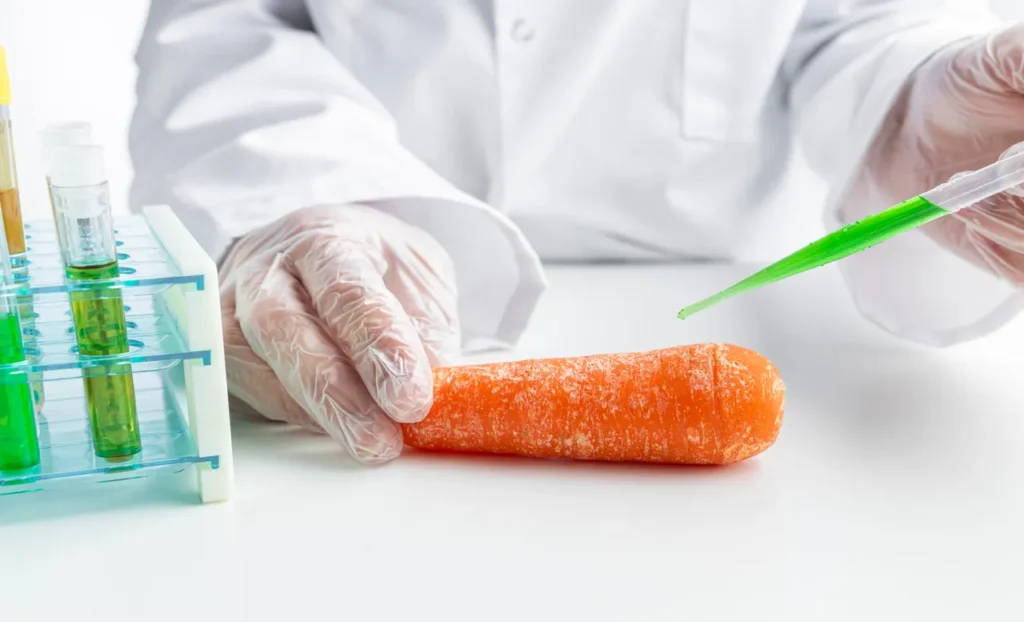Have you ever felt bloated, gassy, or rotten after eating particular foods? You have company. Many folks experience strange stomachaches and don’t realize it’s food intolerances. Finding your dietary demons is difficult. But is it? A food intolerance test might reveal hidden allergens. Food sensitivity testing—what it screens for, how it works, and how it might help you identify blah foods—is covered in this article. Forget the guessing and feel great after every lunch.
Small Note About Food Intolerance Test
A food intolerance trial can reveal which foods are aggravating your body. Food intolerance is a sensitivity or inability to digest particular foods, not an allergy. Common signs of food intolerance include:
• Bleeding
• Gas
• Cramps
• Symptoms: diarrhea, nausea
If you get these symptoms after eating particular foods but don’t know why, a food intolerance test might help. These blood, hair, and stool tests look for food-specific IgG antibodies, which can suggest intolerance. Choices include:
A Blood Test
ALCAT and MRT blood tests detect IgG antibodies in plasma or serum in response to certain meals. This process requires blood.
Hair Test
A tiny hair sample may be tested for antibodies to up to 600 foods using the Allertec test. No blood draw is needed for this method.
Stool Test
A stool test like the GI-MAP examines digestion markers, healthy and harmful bacteria, and other gut health indicators that may cause food intolerances. A stool sample is analyzed.
Common Symptoms of Food Intolerances

Food intolerances can produce many unpleasant symptoms that affect your health and daily life. A dietary intolerance may cause frequent unexplained symptoms. Common food intolerance symptoms include:
Digestion issues: Cramping, bloating, gas, diarrhea, constipation. Intestinal irritation from food intolerances causes pain and irregularity.
Frequent headaches, particularly migraines, may indicate food intolerance.
Skin issues: Eczema, hives, rashes, acne, or itching may suggest food intolerance.
• Excessive fatigue and poor energy may indicate an intolerance to physical activity.
• Food intolerances can cause mood swings, anxiety, and irritability.
Eliminating irritating foods can improve your health and reduce discomfort. The tricky thing is identifying harmful foods. A food intolerance test can help you identify reactive foods and make dietary modifications.
Common dietary intolerances:
Gluten intolerance, often known as celiac disease, can lead to bloating, stomach discomfort, diarrhea, and exhaustion when eating wheat, barley, and rye.
Lactose intolerance is the inability to digest the milk sugar lactose. After eating dairy, gas, cramps, bloating, and diarrhea occur.
The sugar fructose is present in fruits, vegetables, and sweeteners like high fructose corn syrup. Dietary fructose intolerance causes cramping, diarrhea, nausea, and vomiting.
By testing and eliminating food intolerances, you might find the origin of persistent symptoms and feel better by eating healthier. You may enjoy delicious, healthy foods despite an allergy or intolerance by making easy modifications and eating a balanced diet.
Types of Food Intolerance Tests
There are numerous techniques to assess if specific meals give you stomach issues or other symptoms. The most prevalent:
A Blood Test
Your blood serum is tested for IgG and IgA antibodies to determine how your body reacts to certain meals. You may be intolerant to gluten, dairy, eggs, or nuts if these antibodies are high. Blood testing is handy but costly and may provide false findings.
Skin prick Test
Prick your skin and add food extracts to see how it reacts in food intolerance test. Intolerance causes redness, swelling, or itching where the meal is applied. Doctors must do skin prick tests to detect rapid allergic reactions, not dietary intolerance.
Elimination Diet
An elimination diet eliminates trigger foods for a few weeks to test symptoms. Reintroducing foods one at a time helps identify intolerances. This diet is strict yet accurately identifies food devils. The drawback is that it’s hard to identify the offending meal.
Digestive Stool Analysis
Poor digestion, inflammation, and other symptoms of food intolerance are checked in a stool sample. Stool bacteria, fat, or blood may indicate intolerance. This test shows intestinal health but doesn’t list foods to avoid.
Multiple testing may reveal your dietary intolerances or sensitivities best. An elimination diet may validate blood test findings. Discuss your symptoms and requirements with your doctor to choose the best treatment. Finding out what foods upset your stomach might help you feel better quickly.
Why Should I Get a Food Intolerance Trial?
A food intolerance trial can identify your discomforting foods. Do you often have digestion, tiredness, or skin issues? Food intolerances may be to blame. Some reasons to be tested:
Food intolerances are more frequent than you believe. Many people have dairy, gluten, egg, or nut allergies. A food intolerance test can help you identify troublesome items and make diet modifications.
A personalized diet is provided. Your test findings will be used to create a meal plan without items that respond. An elimination diet can enhance health and reduce discomfort.
Provides answers. A food intolerance trial can confirm long-standing symptoms. You’ll understand your body better.
Avoid trial and error. Instead of removing foods individually to find the cause, a food intolerance checkup analyzes everything at once. This shortcut saves months or years of frustration.
Quality of life may improve. Eliminating troublesome foods can greatly improve bloating, headaches, and joint discomfort. Your energy, mood, and clarity may increase.
Food intolerance trials can help you understand how specific foods may harm your health, although they are not 100% accurate. With this knowledge, you may make informed daily food decisions.
Conclusion
Food intolerance testing can help you eliminate or minimize troublesome items from your diet. Stopping triggering foods may reduce bloating, gas, cramps, and other symptoms. These tests sometimes give false positives. Thus, an elimination diet may be needed to confirm. A nutritionist or functional medicine specialist can help you create an effective treatment plan based on your test results.
Our Services include the best healthy eating habits, nutrition guides, diet, nutrition plans and newsdailytime.
FAQs
What does a food intolerance test measure?
Food intolerance checkups evaluate blood IgG antibodies that respond to various meals. High levels of IgG antibodies in a meal may suggest digestive or tolerability issues. Unlike food allergies, which are immune system reactions with instant symptoms. Over time, food intolerances create digestive difficulties and inflammation.
Which foods are tested?
Food intolerance trials often assess reactions to popular foods such as gluten, dairy, and eggs.
• Soy, Yeast, Corn, Caffeine, Chili Pepper, Bananas, and more. Test up to 200 foods.
Certain items are covered depending on the test brand and procedure. IgY testing may include items not in IgG tests.
Were the results accurate?
The accuracy of the food intolerance trial depends on kind and quality. The most accurate and comprehensive IgG blood tests measure over 150 foods. However, no test is perfect. Possible false positives and negatives. Consider your symptoms, medical history, and test results for the most accurate results. Doctors or nutritionists can help you identify food intolerances via an elimination diet.
What should I do with the results?
Your test results will show which foods had strong, moderate, or low IgG antibody reactions. Avoid or lower high and moderately reactive foods for several weeks to improve symptoms. You can then reintroduce one meal at a time to test your tolerance. Work with your doctor or nutritionist to create a customized exclusion and reintroduction strategy for optimum outcomes. Restricting food based on test results may be unnecessary.
How frequently to retest?
Food Intolerance Test can alter due to gut health, stress, and environmental exposures. Reassessing your sensitivities 6-12 months after dietary modifications or every 1-2 years as needed is suggested. If your symptoms have changed significantly or you’ve been on an elimination diet for a while, retest.
Must Read: Pregnancy Nutrition Chart

